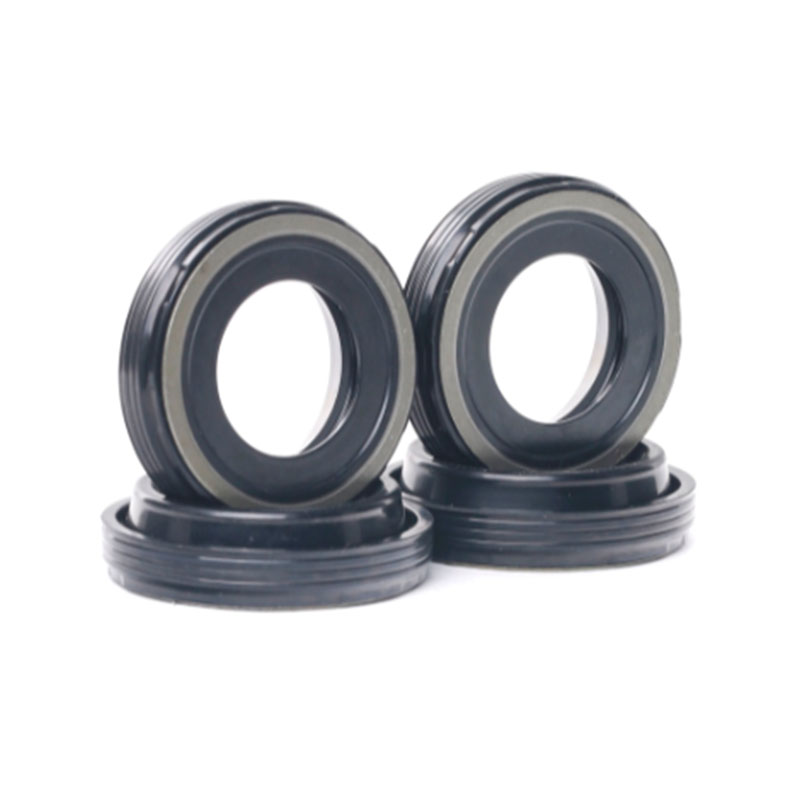stuffing box mechanical seal
Understanding Stuffing Box Mechanical Seals Function and Importance
In industrial applications, maintaining the integrity of machinery and preventing leaks are critical for efficient operation and safety. One common solution employed in various equipment, especially in pumps and compressors, is the stuffing box mechanical seal. This article explores the concept of stuffing box mechanical seals, their applications, advantages, and maintenance.
What is a Stuffing Box Mechanical Seal?
A stuffing box mechanical seal is a sealing device used to prevent the leakage of fluids (liquids or gases) from a rotating shaft. Typically positioned at the entry point of a shaft into a housing, the stuffing box acts as a barrier to ensure that the internal fluid remains contained, thereby preventing environmental contamination and optimizing operational efficiency.
The stuffing box consists of several components, including packing material, a gland, and sometimes a spring mechanism. The packing material, which can be made from various materials such as PTFE (polytetrafluoroethylene) or graphite, surrounds the shaft and creates a tight seal when compressed by the gland. This mechanism is crucial for the seal's effectiveness, as it adjusts to wear over time, thus maintaining a consistent seal without significant fluid loss.
Applications of Stuffing Box Seals
Stuffing box mechanical seals are widely used across various industries, including
1. Oil and Gas In drilling rigs and refineries, maintaining a secure seal is vital to prevent hazardous substances from leaking into the environment.
2. Chemical Processing Chemical plants utilize stuffing box seals to manage the safe transfer of corrosive and volatile substances.
3. Water and Wastewater Treatment These seals play a crucial role in pumps used for transporting water or treating wastewater, ensuring that the systems operate efficiently without leaks.
4. Power Generation In turbines and other energy-generating equipment, stuffing box seals are essential for maintaining pressure and preventing loss of working fluids.
Advantages of Stuffing Box Mechanical Seals
stuffing box mechanical seal

2. Reduced Downtime Effective sealing minimizes the chances of operational failures, leading to reduced downtime and maintenance costs.
3. Versatility Stuffing box seals can be adapted to accommodate various shaft sizes and types of fluids, making them suitable for diverse applications.
4. Ease of Replacement When wear occurs, packing material can be replaced without significant disassembly of the system, enhancing maintenance efficiency.
5. Cost-Effectiveness Compared to other sealing technologies, stuffing boxes are often more economical to install and maintain, particularly in facilities with large-scale operations.
Maintenance of Stuffing Box Seals
While stuffing box mechanical seals are designed for durability, regular maintenance is crucial to ensure their longevity and effectiveness. Here are some maintenance tips
1. Regular Inspection Routine checks should be conducted to identify signs of wear or leakage. Early detection can prevent more significant issues down the line.
2. Proper Packing Material Selection Choosing the right packing material for the application can improve sealing performance and reduce wear. Factors such as temperature, pressure, and the nature of the fluid must be considered.
3. Gland Adjustment The gland should be properly adjusted to ensure that the packing is neither too loose (leading to leaks) nor too tight (causing excessive wear).
4. Lubrication In certain applications, lubricating the packing can extend its life by reducing friction and heat generation.
Conclusion
Stuffing box mechanical seals are essential components in maintaining the efficiency and safety of various industrial processes. Their ability to prevent leaks, combined with ease of maintenance and adaptability, makes them a preferred choice in many applications. By understanding their function and implementing proper maintenance practices, industries can ensure more reliable and effective operations, ultimately resulting in cost savings and greater environmental protection.
-
Your Essential Guide to Car Repair Kits: From Rust to Dings
News Jun.13,2025
-
Understanding Vital Engine Seals: Key Gaskets in Diesel and Performance Engines
News Jun.13,2025
-
The Vital Role of Bearings in Marine and Boating Applications
News Jun.13,2025
-
Sealing the System: A Complete Guide to Engine Oil Gaskets
News Jun.13,2025
-
Sealing the Foundation: A Complete Guide to Engine and Transmission Pan Gaskets
News Jun.13,2025
-
Essential Bearings and Hubs for Marine Vessels and Trailers
News Jun.13,2025
-
Your Complete Guide to Automotive Oil Drain Plugs and Valves
News Jun.12,2025
Products categories















